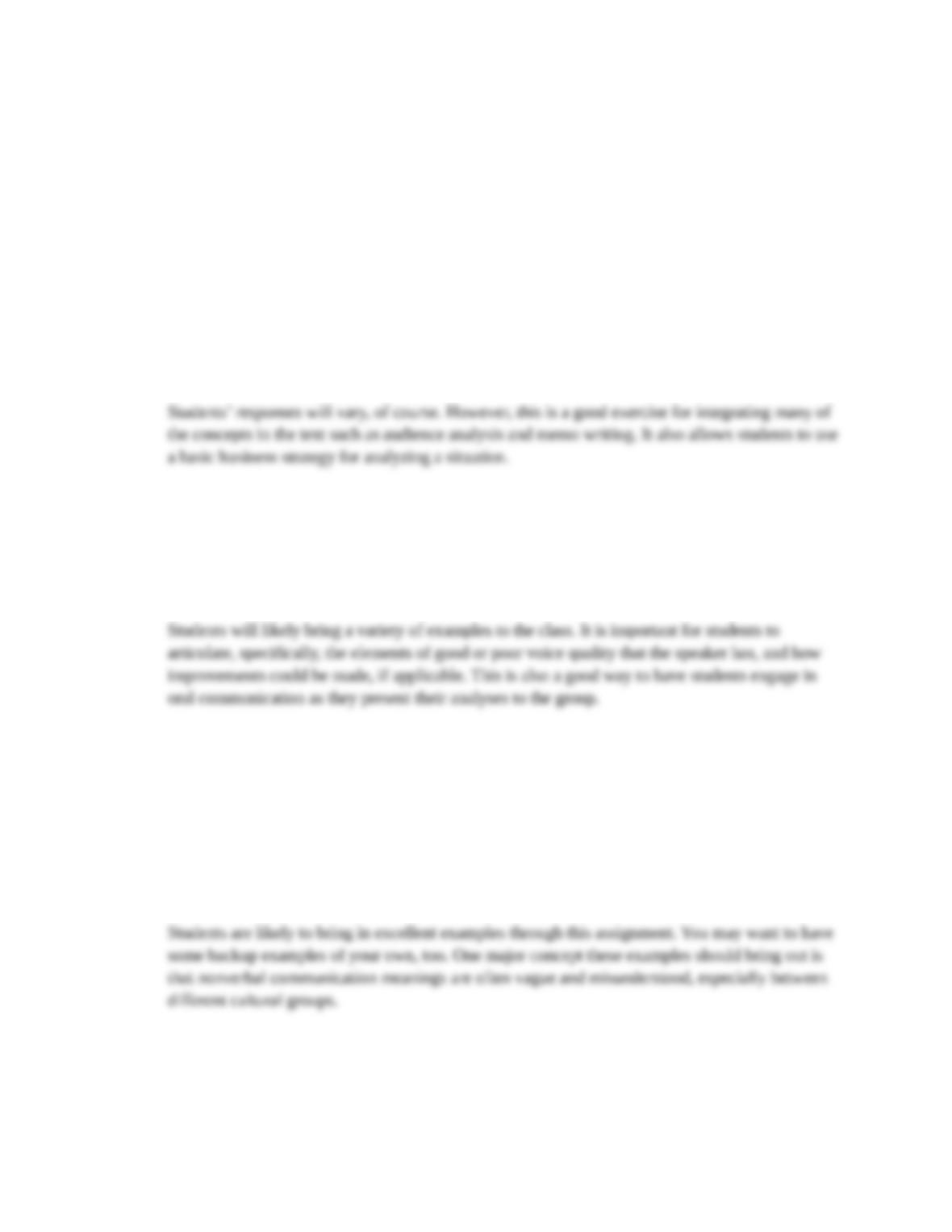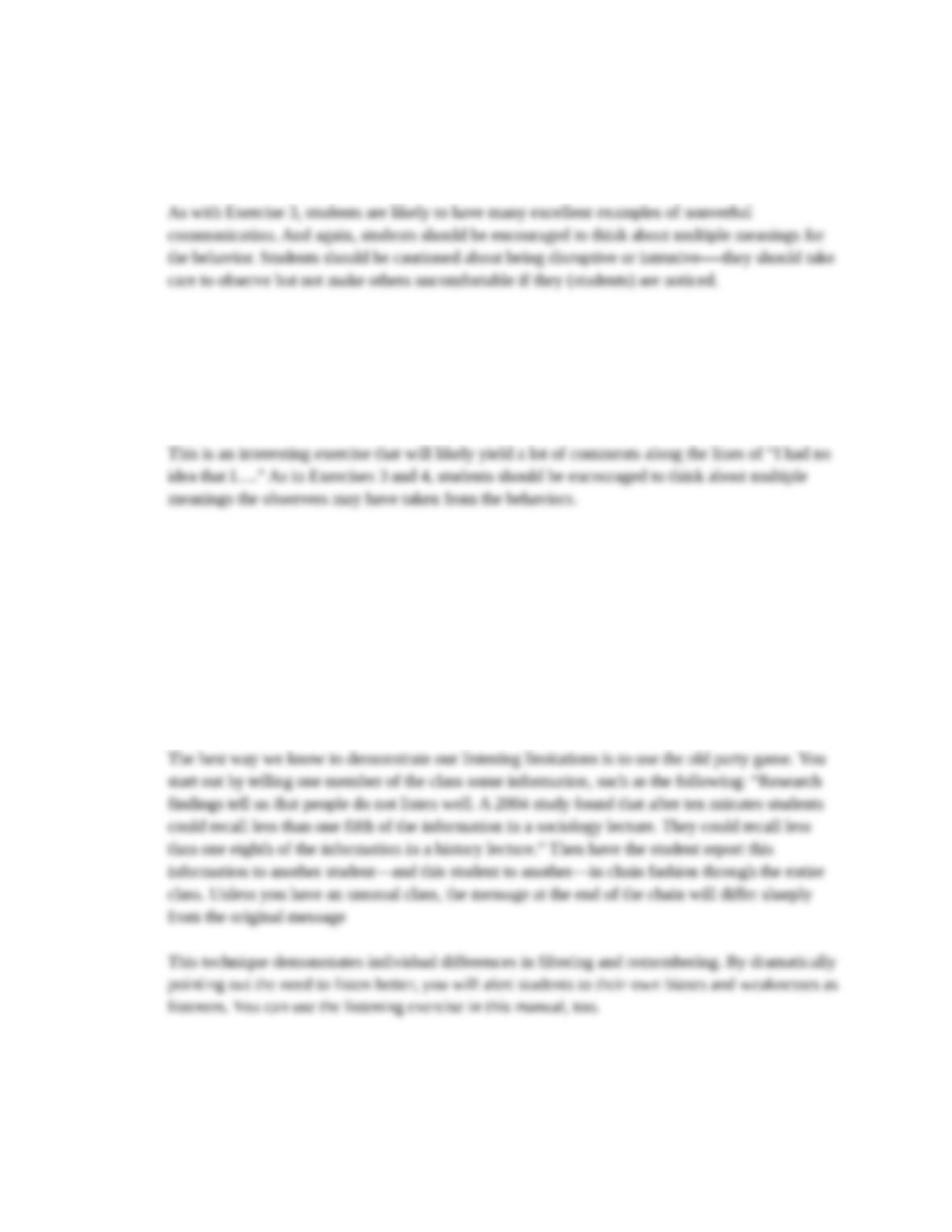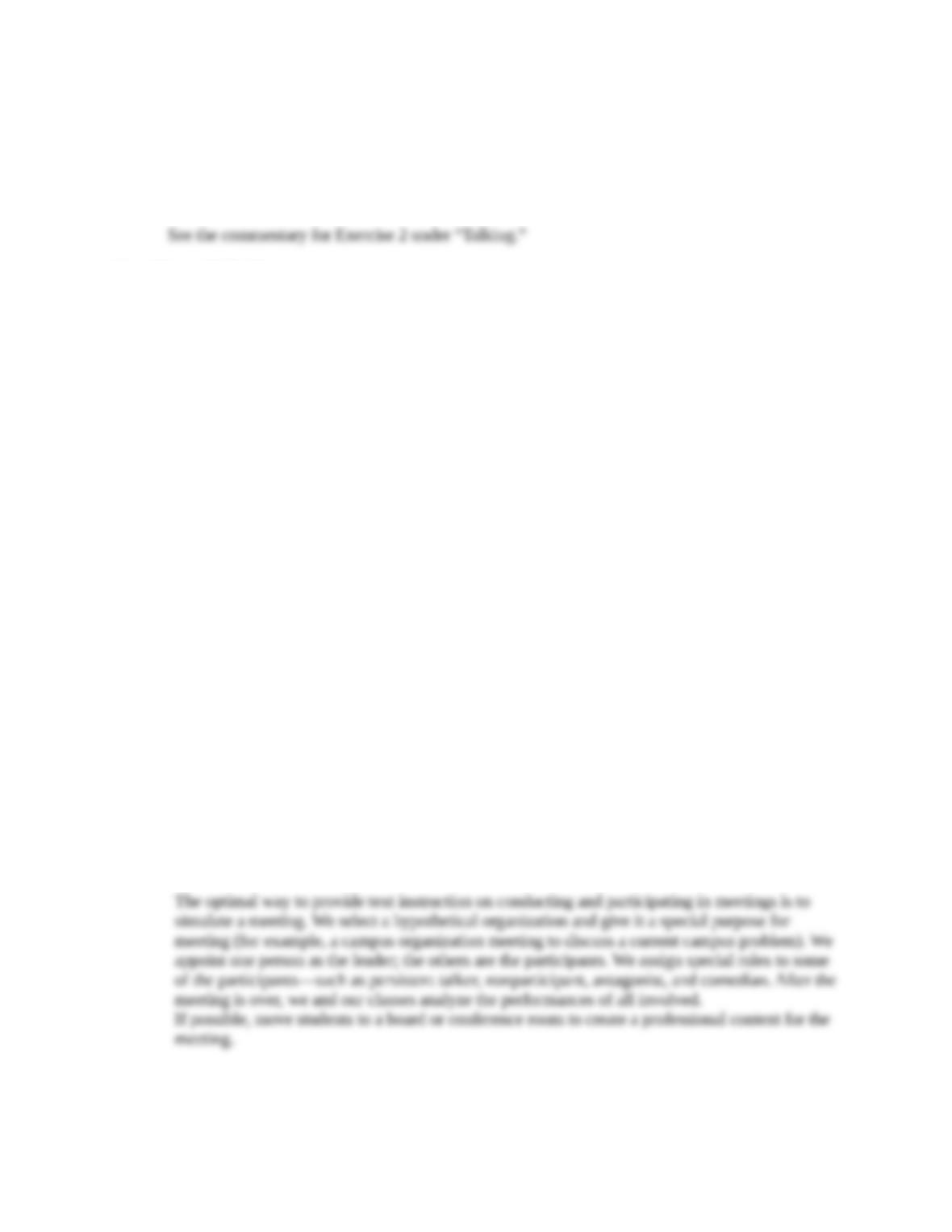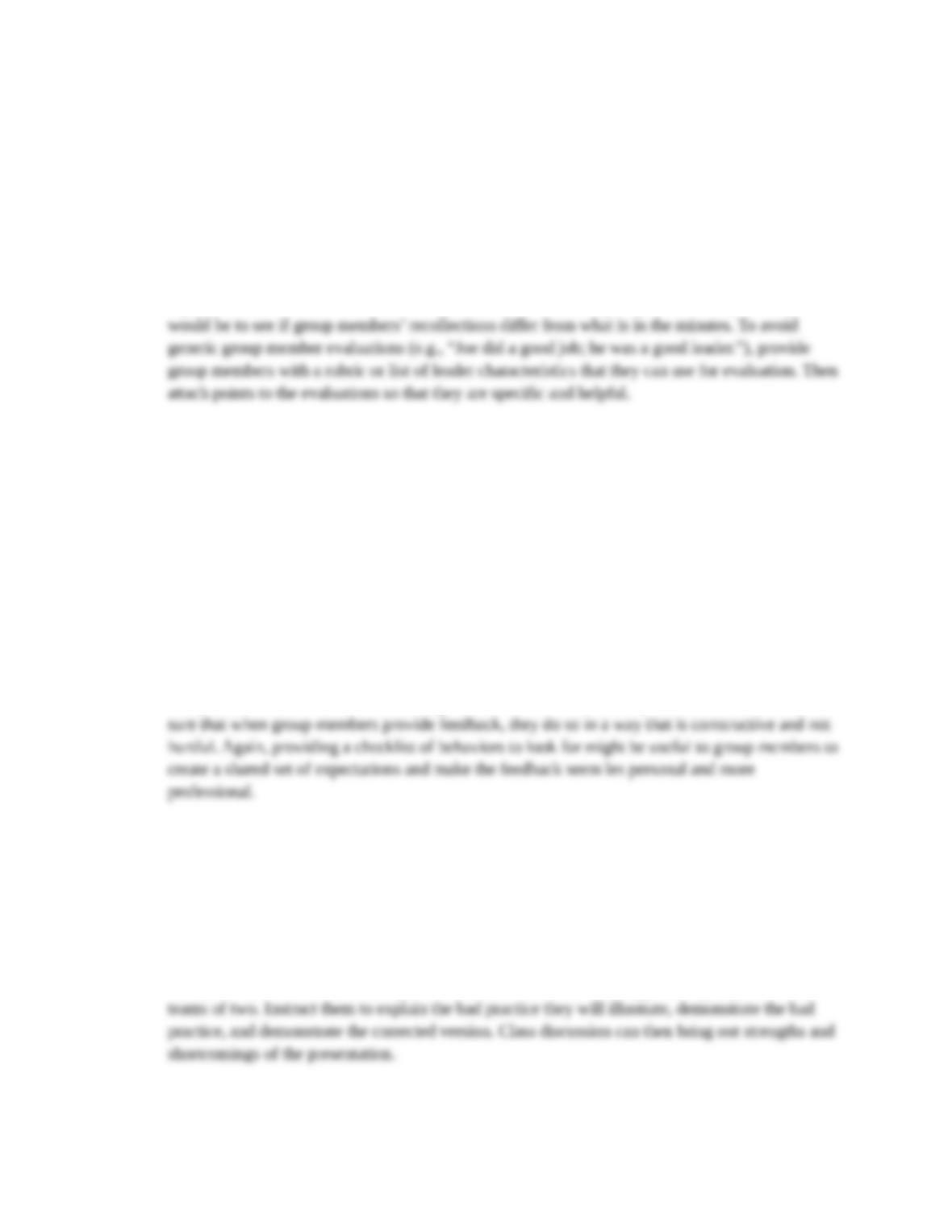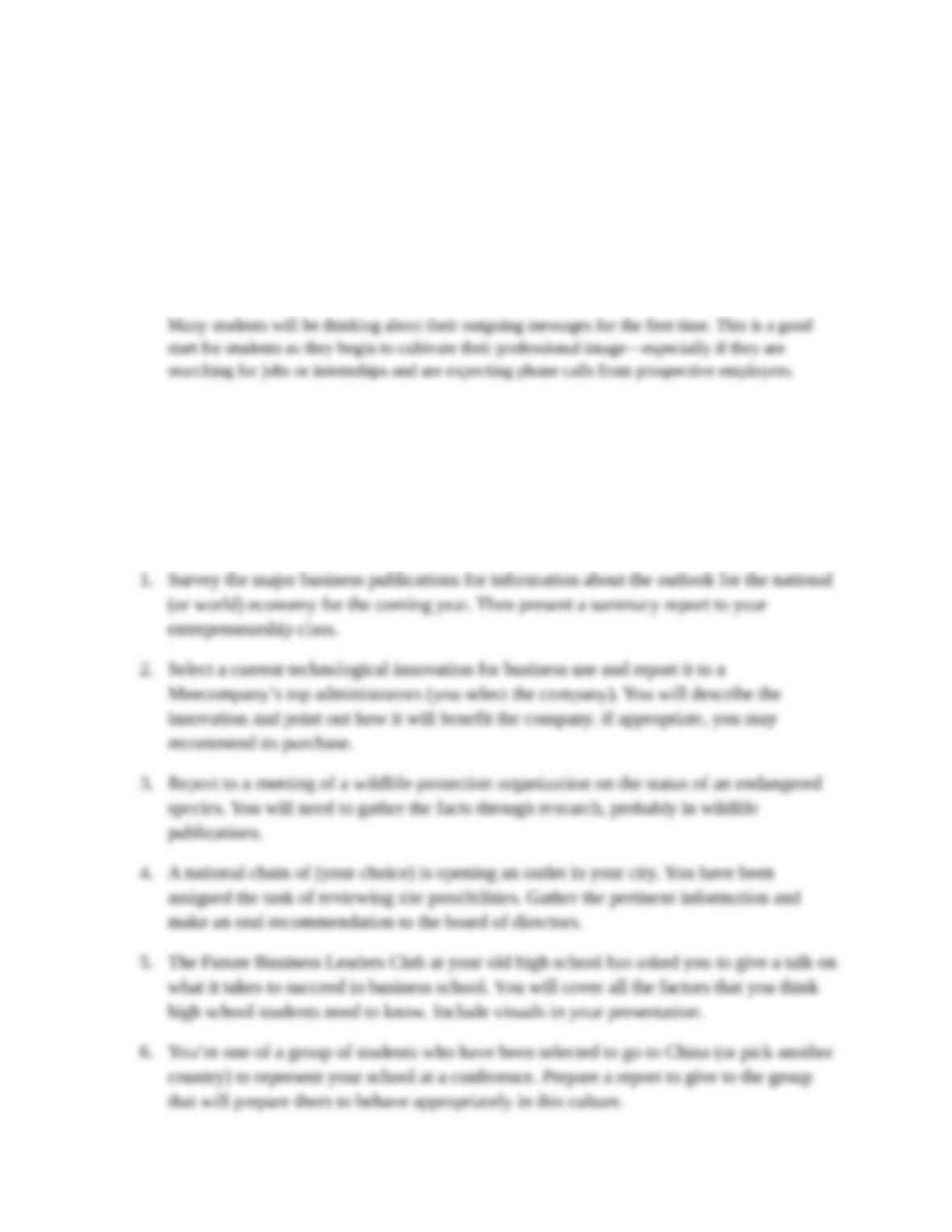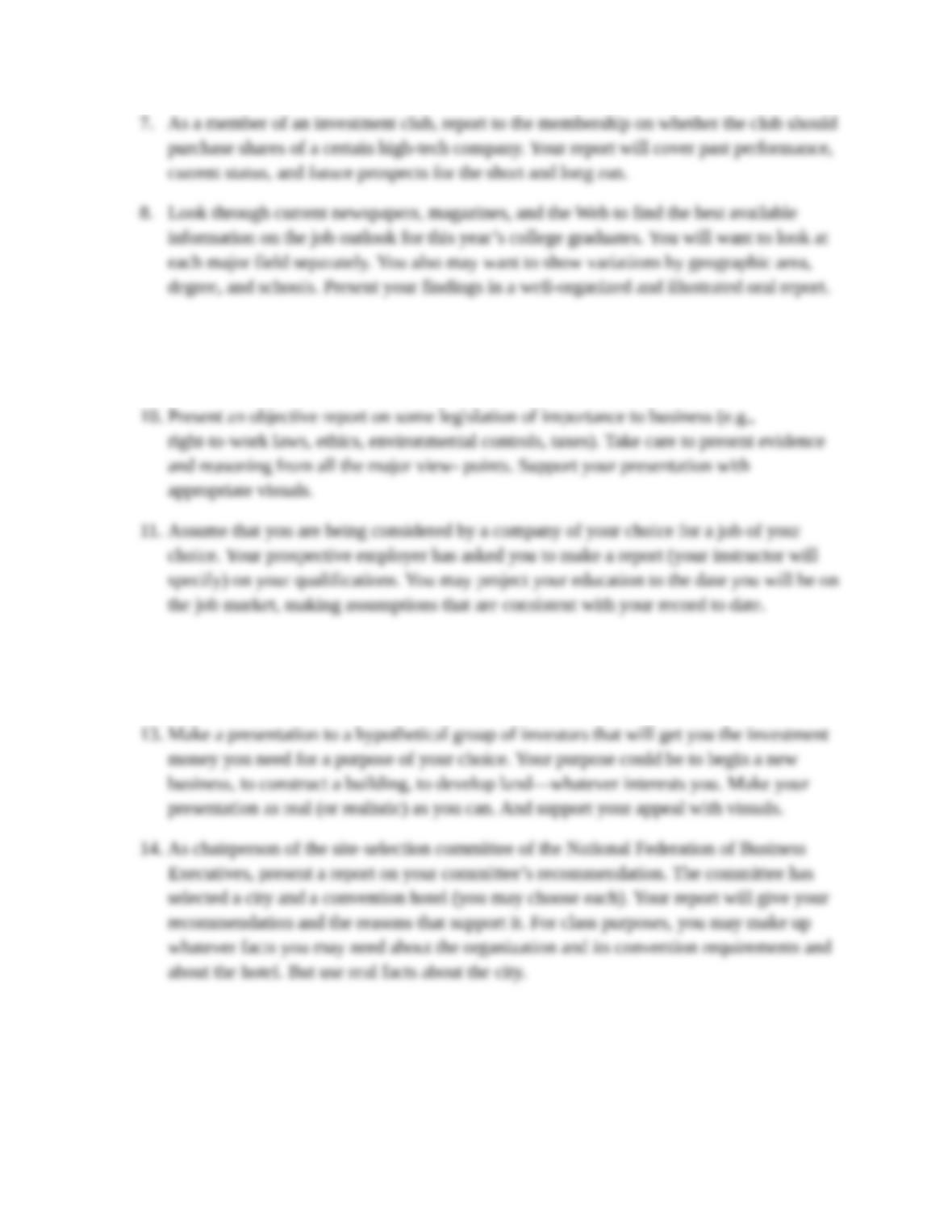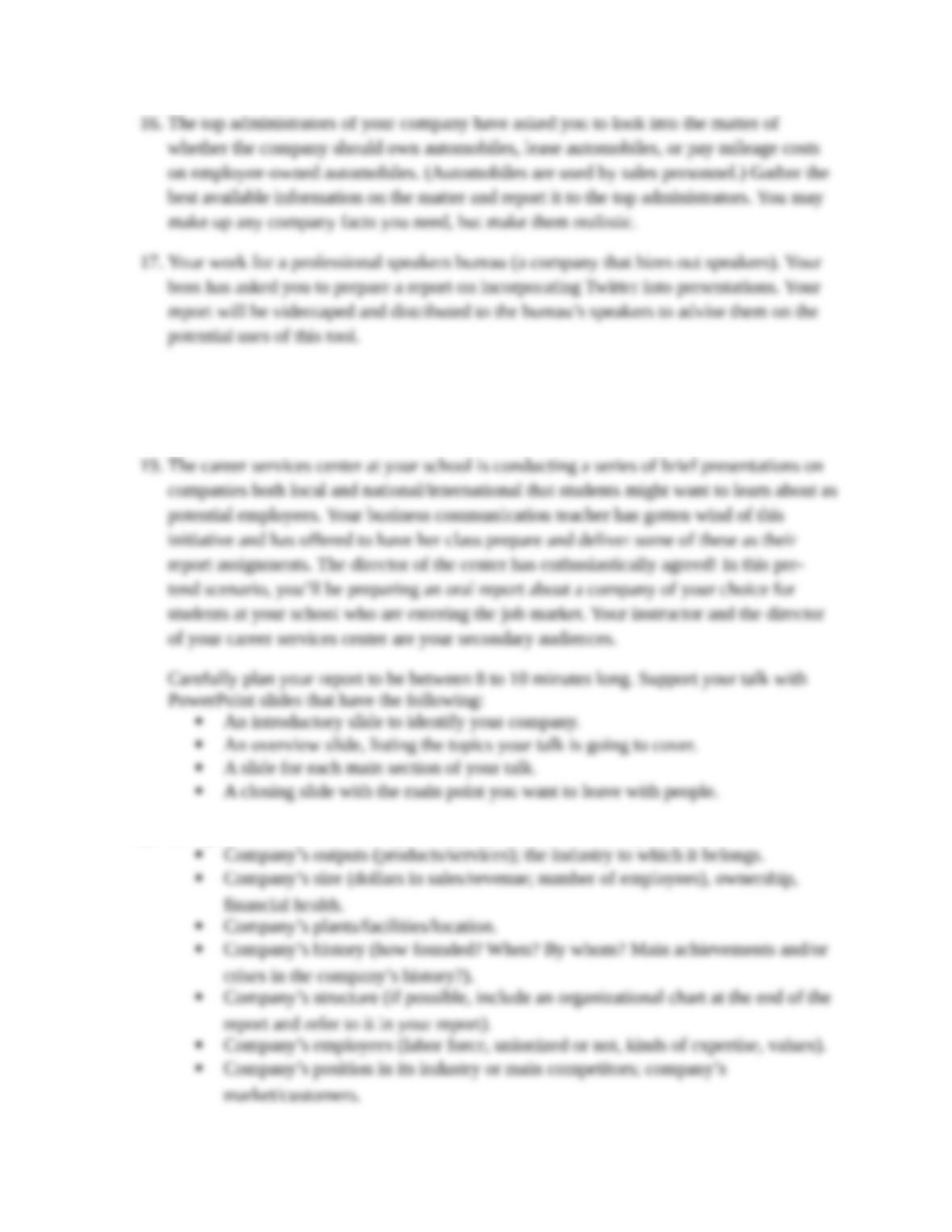Chapter 10 - Communicating Orally
Checklist #1: Preparing Presentation Slides
Questions about the presentation as a whole:
Is there an attractive, clearly worded, readable title slide?
Does the writer make good use of an outline slide?
Is it titled effectively, and are the items in the list of topics grammatically parallel?
Do the slides seem to cover all the important information?
Do the slides seem to be in the most logical order?
Is there a final slide that sums things up or leaves people with a significant thought or
finding?
Does the whole presentation have a consistent look?
Questions about every slide:
Is there a strong contrast between the background and the text color?
Is there any type that is too small to be read? (Remember, no typeface should be
smaller than 24 points.)
Conversely, is any type too big (yelling)?
Is any typeface hard to read (as with italics or too fancy a font)?
Is there too much or too little information on any slide?
Should any slides be combined or divided up?
If a topic is covered in more than one slide, the title on the subsequent slides should
include “(cont’d).” Is every slide accurately/informatively titled?
Has the writer managed the hierarchy of the information well (not using more than
two levels of information and making clear which is on the top level and which is on
the secondary level)?
Are all headings on the same level grammatically parallel?
Are items in all lists grammatically parallel? Is the wording on each slide clear and
grammatically correct?
If there are borrowed facts or quotes, are the sources named clearly on the slides? Is
each slide visually clean and attractive?
Should/could the writer add visuals anywhere?
Are all visuals appropriately used and clearly labeled?
Are the dynamic elements (e.g., slide transitions) appropriate for the topic and
audience?
Should you use more or less animation at any point?
Checklist #2: Oral Presentation Basics
Be sure your report or speech has a clear, audience-adapted objective.
Organize the talk so that it leads the listeners logically to your conclusion. The
situation may call for either the direct or indirect order.
Plan an engaging beginning.
Plan for appropriate audience participation.
Plan the visuals, if any, that will support your talk.
10-10
Copyright © 2015 McGraw-Hill Education. All rights reserved. No reproduction or distribution without the prior written consent of
McGraw-Hill Education.
